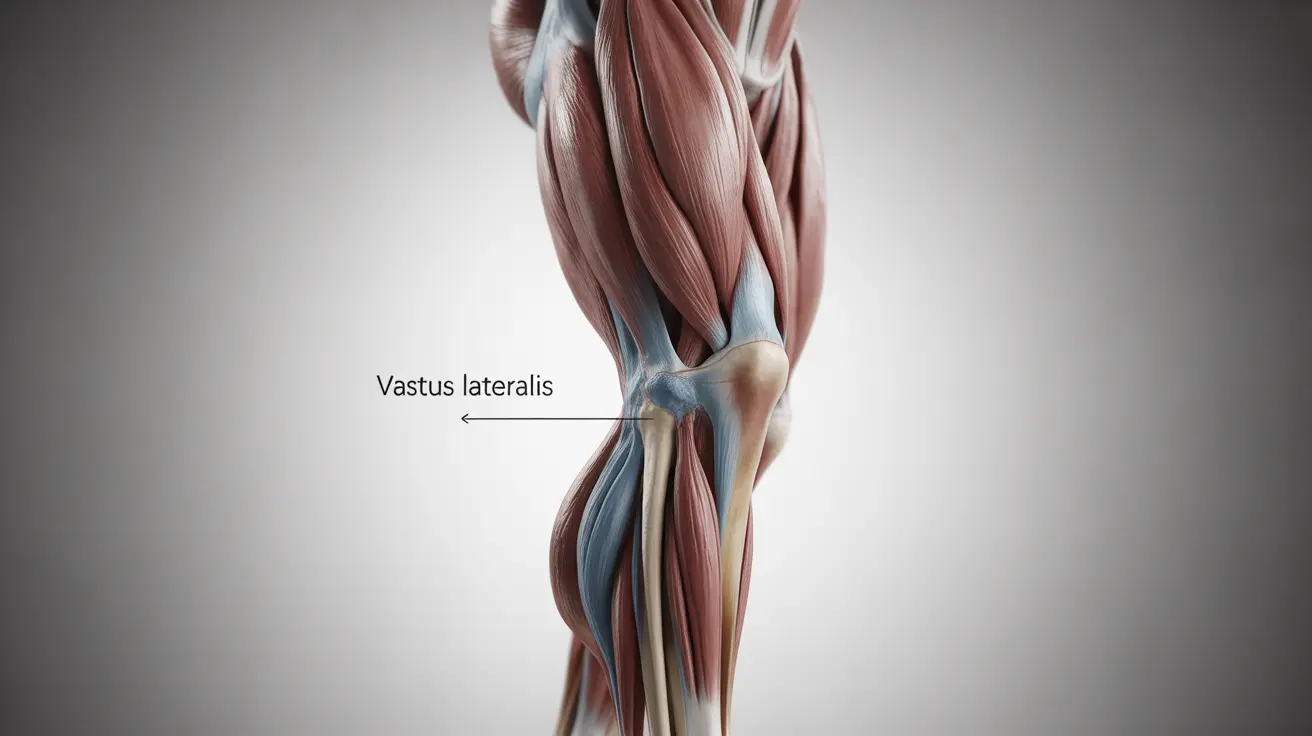The vastus lateralis is one of the most important muscles in the human body, playing a crucial role in leg movement and knee stability. As the largest of the four quadriceps muscles, it runs along the outer side of the thigh and contributes significantly to everyday activities like walking, running, and climbing stairs.
This powerful muscle not only helps maintain proper knee alignment but also serves various medical purposes, including being a preferred site for intramuscular injections in certain populations. Understanding its function and importance can help you better appreciate how it contributes to your daily mobility and overall leg strength.
Anatomy and Location
The vastus lateralis is located on the lateral (outer) side of the thigh, extending from the hip to the knee. It originates from the upper femur and greater trochanter, running downward to attach to the patella (kneecap) via the quadriceps tendon. Its substantial size and accessible location make it one of the most prominent muscles in the leg.
Primary Functions and Importance
The vastus lateralis serves several essential functions in body movement and stability:
- Knee extension (straightening the knee joint)
- Stabilization of the patella during leg movement
- Support for maintaining an upright posture
- Assistance in powerful movements like jumping and running
Working in conjunction with the other quadriceps muscles, it provides the strength needed for activities requiring leg power and stability.
Blood Supply and Innervation
The vastus lateralis receives its blood supply primarily from the lateral circumflex femoral artery, ensuring adequate oxygen and nutrient delivery to this large muscle mass. The femoral nerve provides neural innervation, controlling muscle contraction and coordination with other leg muscles.
Clinical Significance
Injection Site Benefits
Healthcare providers often choose the vastus lateralis as an injection site, particularly in infants and young children, because:
- It has a large, easily accessible muscle mass
- Contains fewer major blood vessels and nerves compared to other sites
- Demonstrates excellent absorption of medications
- Poses minimal risk of injury to surrounding structures
Common Injuries and Prevention
Athletes and active individuals may experience vastus lateralis injuries, which can manifest as:
- Muscle strains from overuse
- Tendinitis near the knee attachment
- Weakness affecting stability and movement
- Pain during activities requiring knee extension
Regular stretching, proper warm-up routines, and balanced strength training can help prevent these issues.
Frequently Asked Questions
What is the function of the vastus lateralis muscle in knee movement and stability?
The vastus lateralis primarily functions to extend (straighten) the knee joint and stabilize the patella during movement. It works with other quadriceps muscles to provide power for activities like walking, running, and climbing stairs while maintaining proper knee alignment.
Why is the vastus lateralis muscle commonly used for intramuscular injections in infants?
The vastus lateralis is preferred for infant injections because it offers a large, easily accessible muscle mass with fewer major blood vessels and nerves. Its size and location make it safer and more comfortable for injections compared to other sites.
How can injury or strain to the vastus lateralis muscle affect walking or running?
Injury to the vastus lateralis can significantly impact mobility, causing difficulty with knee extension, decreased stability during walking or running, and potential pain during weight-bearing activities. It may also lead to compensatory movements that affect overall gait patterns.
What nerves and blood vessels supply the vastus lateralis muscle?
The vastus lateralis is innervated by the femoral nerve and receives its blood supply primarily from the lateral circumflex femoral artery. This robust blood and nerve supply ensures proper muscle function and responsiveness.
How does the vastus lateralis differ from other quadriceps muscles like the rectus femoris?
While the rectus femoris crosses both the hip and knee joints, the vastus lateralis only crosses the knee joint. It is also the largest and most lateral of the quadriceps muscles, focusing specifically on knee extension and stability rather than hip flexion.




